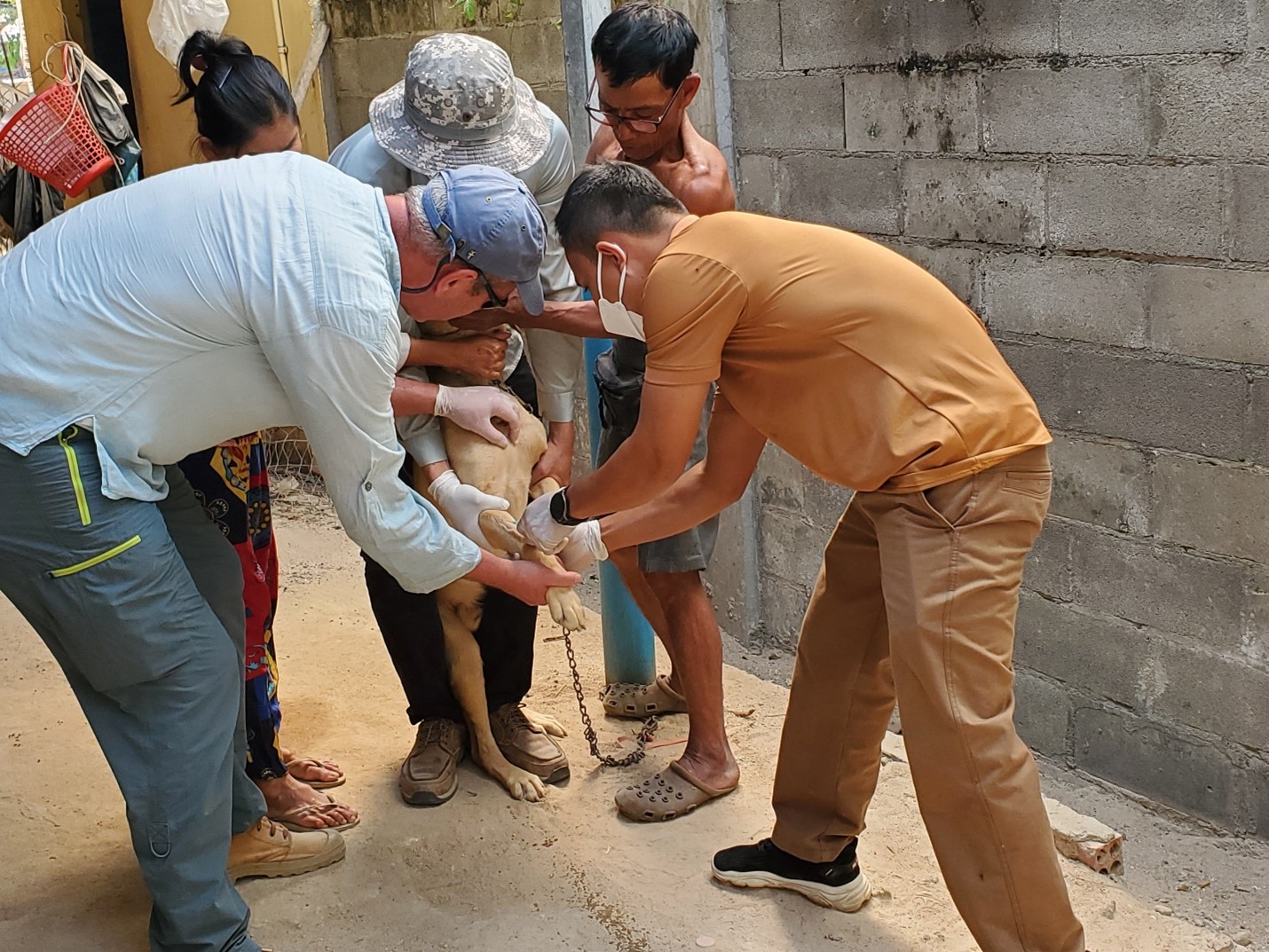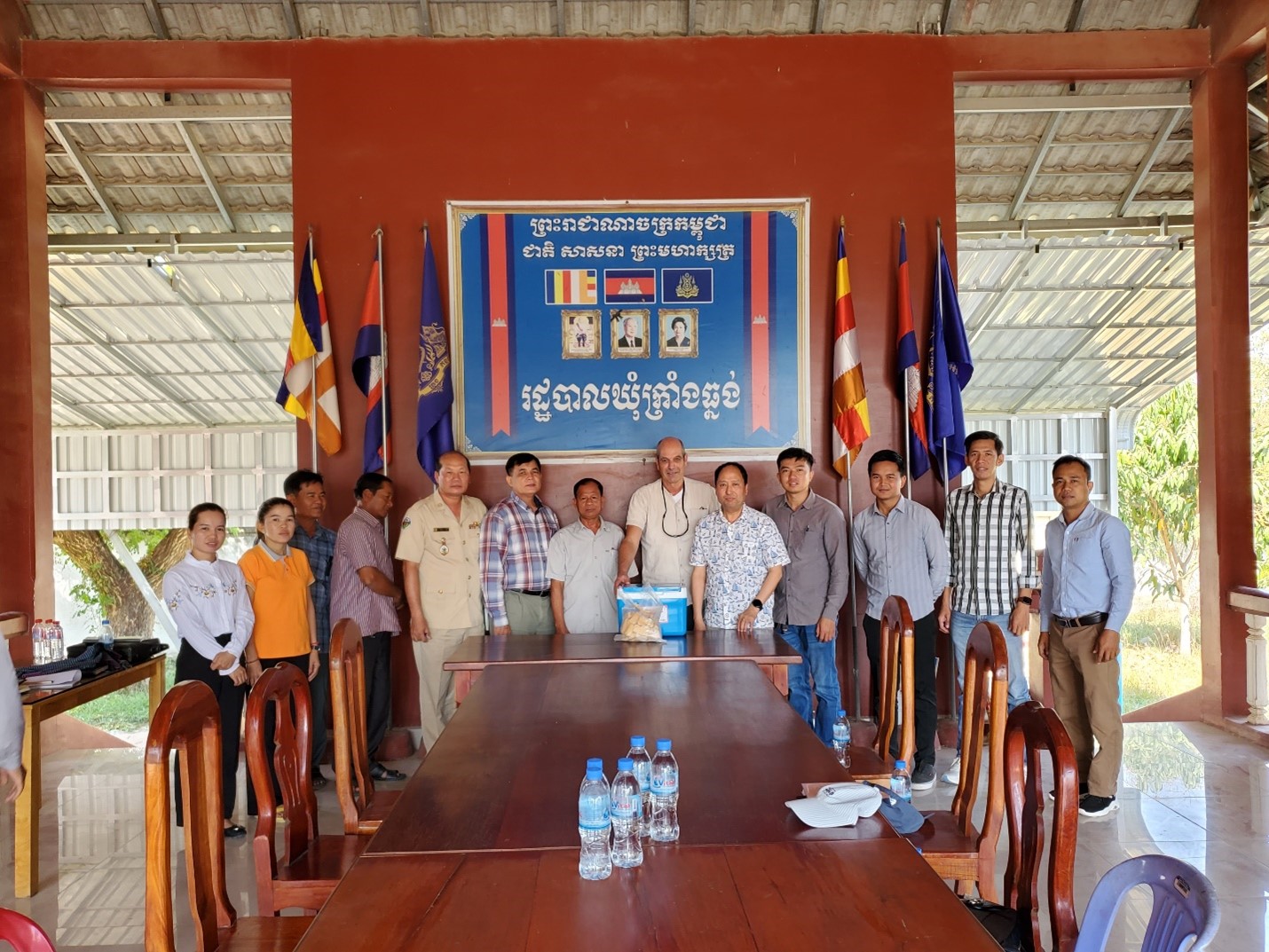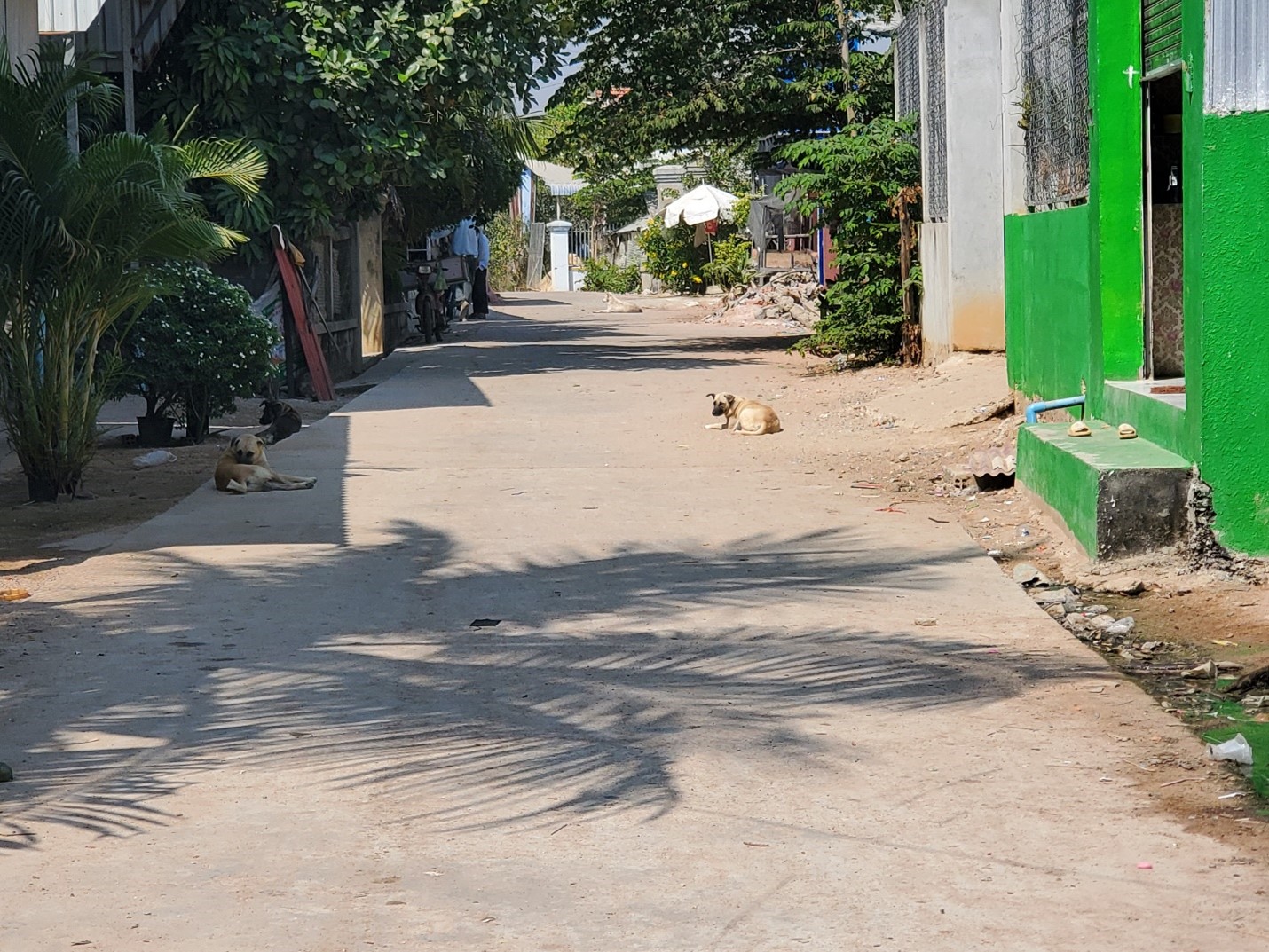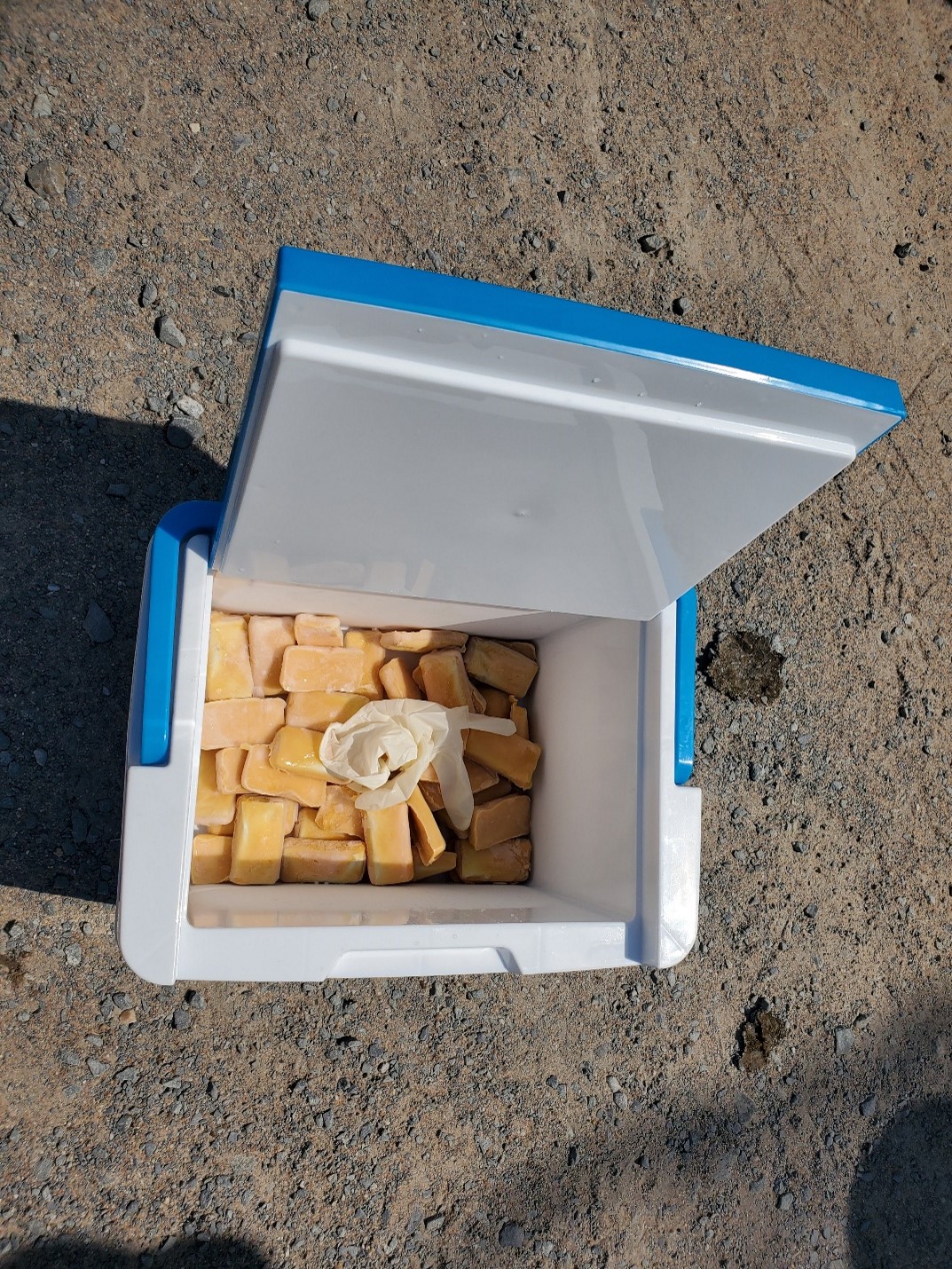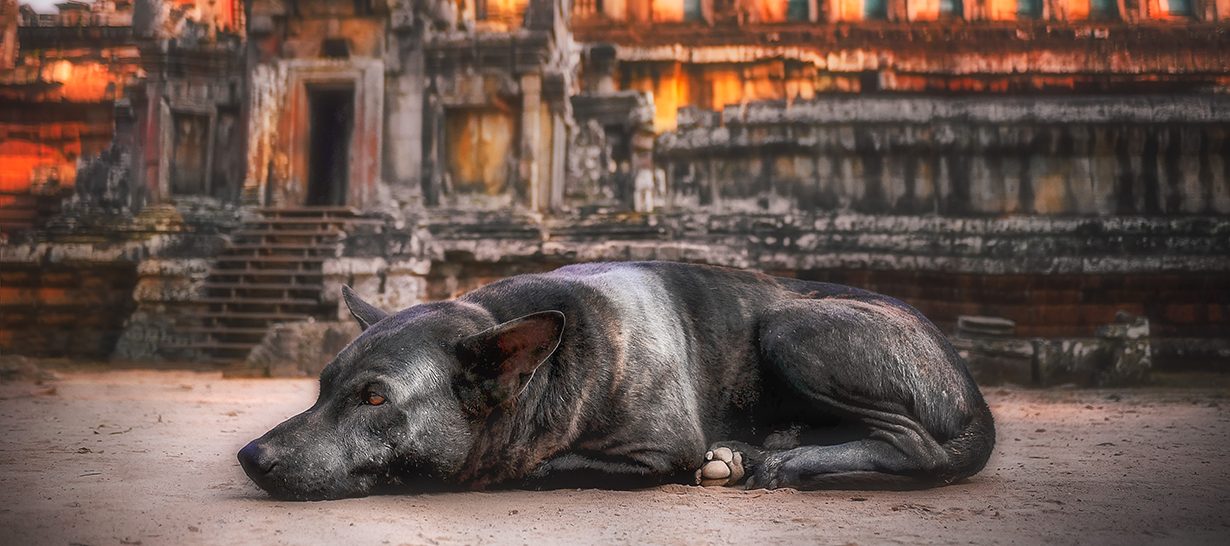
Officials from GDAHP, local commune office, provincial animal production office (Cambodia) and representatives of WOAH and Ceva at the launch of the pilot study (12 February 2024). Photo Credit: Kinzang Dukpa, WOAH
25 March 2024 (Cambodia) – The World Organisation for Animal Health Regional Representation in Japan (WOAH RRAP) together with the Government of Cambodia’s General Directorate for Animal Health and Production (GDAHP) launched an Oral Rabies Vaccination (ORV) pilot study in several villages under Krang Thnong Commune, Tonle Bati district of Takeo Province on 12 February 2024.
"Owned" free roaming dogs on the road in a village in Cambodia. Photo Credit: Kinzang Dukpa, WOAH
As Cambodia struggles to control rabies, owing primarily to low vaccination coverage, especially in free-roaming dogs, ORV use is expected to complement parenteral vaccination initiatives in Cambodia. Free-roaming dogs form the bulk of Cambodia’s dog population, and it is important to perform vaccinations on this group to complement ongoing parenteral vaccination programs.
The oral rabies vaccine baits (egg-based) ready for use. Photo Credit: Kinzang Dukpa, WOAH
A total of 1000 doses of the third-generation oral rabies vaccine (Rabitec®) containing SPBN GASGAS rabies virus strain (from Ceva Sante Animale, Ceva®), which is a live modified vaccine, were used in line with the WOAH recommended method of “handout and retrieve”. This involves handing out egg-based baits containing the vaccines to dogs, with resulting sachets and blister packages collected after for proper disposal. Before and during the pilot campaign, dog owners and the public were made aware of the vaccine and undertaken safety measures.
Blood sampling being done after proper restraint of the animal (following vaccination). Photo Credit: Kinzang Dukpa, WOAH
Thanks to the funding support of the Japanese Government (Japan Trust Fund), this pilot study is being supported by the WOAH Regional Office in Tokyo, including vaccine supply and pilot study costs. Dr Kinzang Dukpa, Regional Project Coordinator, represented WOAH at the launch and provided technical support together with Dr Ad Vos, ORV Expert from Ceva® who also provided training to the GDAHP team on handling and delivery of the vaccines, safety protocols to be followed, and post-vaccination monitoring protocols.
At the end of the study, data will be analysed to understand the bait acceptance and immune response status of the vaccinated animals under field conditions.
